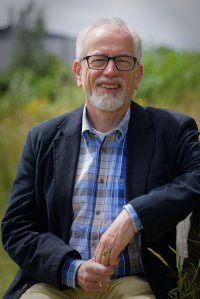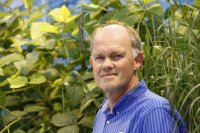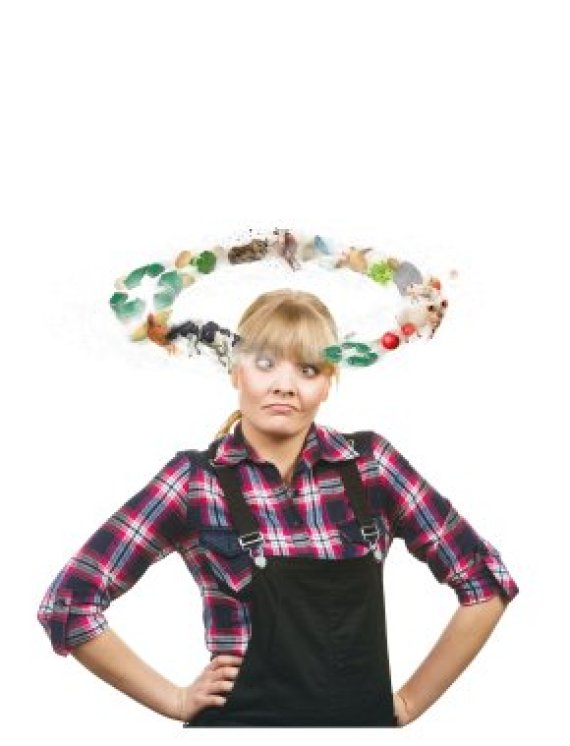text Albert Sikkema illustration Jeroen Murré
More organic matter in the soil
Lijbert Brussaard, emeritus professor of Soil Biology at WUR, cites the cabinet’s vision of circular agriculture with approval: ‘The soil forms the basis for circular agriculture. A soil that contains plenty of organic matter is better able to absorb water and to withstand drought. Such soil can also retain more nitrogen and minerals, offers a richer soil life and contributes to healthy crops.’
The amount of organic matter is indeed at the heart of good soil quality, says Brussaard. Because organic matter provides nutrients – good for crop production, carbon storage – good for the climate, and a buffer against drought.

‘For good quality soil, farmers need to adjust their croppnig plans plough less – Lijbert Brussard, Emeritus professor of Soil Biology
If farmers want good quality soil, they must adapt their cropping plan, adds Brussaard. ‘You capture carbon in the soil with deep-rooted crops such as grains, not with shallow-rooted crops such as potatoes. Arable farmers should therefore include more grains in their cropping plan. Another good options is to plant more deep-rooted plants on the same plot.’
It also helps to plough less and make more use of non-inversion tillage, which prevents the stored carbon disappearing into the atmosphere as CO2. An added advantage of ploughing less is that the farmer works the land less often with heavy tractors that damage the soil structure. These measures help you create a good basis for circular agriculture, says Brussaard. The second important point for him is to link crop farming with livestock farming, as a way of making sure manure is better used. ‘But then the crop farmer has to be able to trust the quality of the manure. Liquid manure is not good enough, composted manure with straw is much better for the soil.’ To be able to supply good manure, it is better to separate the faeces and urine of the livestock at source, in his view. The urine can be spread on the land as a fast-action substitute for artificial fertilizer, while the fibre-rich solid wasteis suitable for building up organic matter in the soil. ‘I think you can develop cycles if buyers and government set criteria for organic waste in the chain, with a view to optimum usability.’
Finally, Brussaard envisages a circular agriculture system that is fossil fuel-free. ‘Agriculture is using much less artificial fertilizer now than 20 years ago, but does still use a lot of chemical pesticides.’ Brussaard thinks we need to get rid of these, which requires more knowledge of the interactions between crops and biological pesticides.

‘If you heat up food waste properly and only feed it to pigs, it is safe’ – Imke de Boer, Professor of Animal Production Systems
F
eeding livestock on leftovers
Imke de Boer’s chair group, Animal Production Systems, used to make footprint analyses to measure the external impact of livestock farming. One of the outcomes was that eating chicken is not as bad for the environment as eating beef. However, that conclusion ignored the fact that chickens eat grain – which is suitable for human consumption too – while cows eat grass, which is not.
For this reason, De Boer’s group switched to the food systems approach developed by researcher Hannah van Zanten. That approach takes three important conditions as its starting point: 1. Arable land is used for food production and grassland for the production of livestock feed. 2. Waste flows are primarily used for enriching the soil and feeding animals. 3. Water plants and insects that do not compete with food production are grown for use as livestock feed.
Just as in the old days, in the food systems approach pigs and chickens eat up our leftovers, but through a more modern and large-scale system, says De Boer. This approach gives the livestock sector a sustainable position in a circular agriculture system. In fact, this form of livestock farming makes less demand on resources than a vegan diet, De Boer’s group calculated, because a vegan diet does not make optimal use of waste flows from the food industry.
A food systems approach would restrict numbers of production animals, adds De Boer. Using grasslands and waste flows, you can produce about 23 grams of animal protein per person per day. ‘In that scenario, we in Europe would have to halve our production of animal protein, while in Asia there is scope for eating slightly more animal products.’
A key bottleneck for circular livestock farming is that many waste products in the food chain are not allowed to be used in livestock feed. Feeding kitchen waste and food waste to cows, pigs and chickens has been banned since 2003. Animal meal – which is made of the carcasses and other remains of animals – is banned for use in feeds, in part because of the risk of BSE (mad cow disease). That legislation should be reviewed, thinks De Boer. ‘In Japan they do allow this; that country recycles 35 percent of its food waste. If you heat this waste properly and only feed it to pigs, it is safe and highly nutritious as an alternative to maize and soya.’

‘Materials do leak out at present because they are extremely cheap’ – Business developer at Wageningen Economic Research
Fair prices for agricultural products
With circular agriculture, you try to make production circular, with a closed cycle and no leaking of material, says Krijn Poppe, business developer at Wageningen Economic Research. ‘At present, those materials do leak out because they are extremely cheap. Artificial fertilizer has become so cheap that animal and human manure no longer has the value it once had. Food has become so cheap that people don’t feel it’s a problem to throw out quite a lot of it. An economist thinks those low prices are fine; that’s what has made us so prosperous. But there is an economic problem because the market doesn’t automatically function well.’
Resources get exhausted in the long term and may be irreplaceable, says Poppe. Producers who use phosphate, produce waste and emit greenhouse gases harm the environment, but nobody pays the bill. ‘To some extent you can solve this problem by improving the way the market functions: ensure that resources and waste materials that are wrongly priced fetch a good price. That way livestock feed manufacturers can decide to introduce a deposit system on minerals in the feed, motivating farmers to deliver the liquid manure.’
Poppe thinks you should stimulate the formation of a cycle economically, using pricing. ‘What complicates it is that those prices are no longer a good indicator of our behaviour. City trips with Ryan Air and a week’s holiday in Thailand are far too cheap. So we invest all sorts of sustainability labels. I think we should recalculate the cost price of agricultural products, this time the sustainable prices.’

‘We should mainly use waste flows to improve soil quality’ – Martin van Ittersum, Professor of Plant Production Systems
Returning plant waste to the land
For circular agriculture you need a broad perspective on production ecology, says Martin van Ittersum, professor of Plant Production Systems. You have to look at the total production of crop systems and biomass on the available land. So this is not just about the amount of corn per hectare, but also about the plant’s leaves and stalks. What is more, you shouldn’t look exclusively at uniform crops, but also at mixed cropping, with combinations of crops, such as wheat and legumes. These can be highly productive farming systems, says Van Ittersum.
You should then look at the growth factors from a circular perspective, says the professor. The main restriction in circular crop-farming systems is the availability of nutrients, especially if you cannot or don’t want to use artificial fertilizer. How can this kind of farming still be made productive? His answer: first and foremost with the aid of all the waste flows from the food system and of nitrogen-binding plants such as pulses.
In the north of the country, a foundation for experimental farms (Stichting Proefboerderijen Noordelijke Akkerbouw) in Kollumerwaard is conducting an interesting experiment on a crop farm with no external inputs. All the nutrients comes from the crops themselves, with no livestock involved. After mowing legumes and other green fertilizer crops, the waste can be spread on the land immediately. ‘This lovely experiment, at the cutting edge, shows what is possible in circular agriculture, as well as what the limitations are. It is totally clean, and efficient too, but the farm’s yield is only half that of regular farms in the same area. Nitrogen is the main limiting factor.’
A totally closed cycle does not seem possible for nitrogen, says Van Ittersum, but it also depends on the amount of organic waste that comes from the food industry. We should first use those waste flows to improve the soil quality, he thinks, and only then should they be processed into feed for livestock production – which in turn provides crop farms with nitrogen.

Oene Oenema, Special professor of Nutrient Management
Isolating nutrients from animal manure
One aspect of circular agriculture is that manure changes from a waste product into a valuable resource. This makes new demands of agriculture, says Oene Oenema, special professor of Nutrient Management at WUR. ‘Livestock farmers should start separating the types of manure on the farm, so as to provide specific fertilizers. For example: organic crop farmers often face a shortage of potassium in the soil. Regular crop farmers deal with this by using artificial fertilizer – a great product because you can apply specific nutrients. If we ban artificial fertilizer, livestock farmers will be able to provide crop farmers with potassium from manure. Potassium is in the urine. So separation should be lucrative for livestock farmers.’
Another aspect of circular agriculture is the reduction in imports and exports of manure, livestock feed and food, and the closing of cycles at the national or regional levels. This can have major consequences. Under current circumstances, for example, if the Netherlands stopped exporting manure – currently one quarter of all the manure is exported – we would have to reduce livestock numbers by one quarter to avoid a manure surplus, says Oenema. But, he adds, if we ban artificial fertilizer at the same time, the demand for animal manure would increase and there might even be scope for more livestock.
A factor for livestock feed is that much of the feed the Netherlands currently imports is made of waste products. ‘Feed manufacturers are very smart about combing the world market for the ingredients for good, cheap livestock feed. They use over 20 different waste products, such as orange peel and palm kernels. And they process it all into high quality feed. That is a circular economy but on a global scale. How are we going to deal with this in the future?’
The other important component of our livestock feed is imported soya. We can now grow that soya in Europe too, says Oenema, but that is more expensive so the price of the feed goes up too.
Growing ‘Nethersoya’ has implications for crop farming. ‘Maize and soya beans are useful feed crops, but you don’t want to end up with half the Netherlands full of maize and soya.’
Altogether, Oenema thinks we are heading for an agriculture system which imports less livestock feed and grows more feed in the Netherlands, which would mean all the manure can be spread on the land, without polluting the environment.
The cabinet’s circular agriculture vision
Minister of Agriculture Carola Schouten presented the new agriculture vision at the beginning of September, on behalf of the cabinet. In this vision, Dutch agriculture and horticulture hold on to their ‘tone-setting global position while at the same time addressing ‘several major societal challenges’: soil depletion, loss of biodiversity and climate change. The cabinet opts for ‘a transition to circular agriculture by 2030.’ ‘This means generating as little waste as possible and keeping emissions of harmful substances and losses of resources and of end products to a minimum.’

